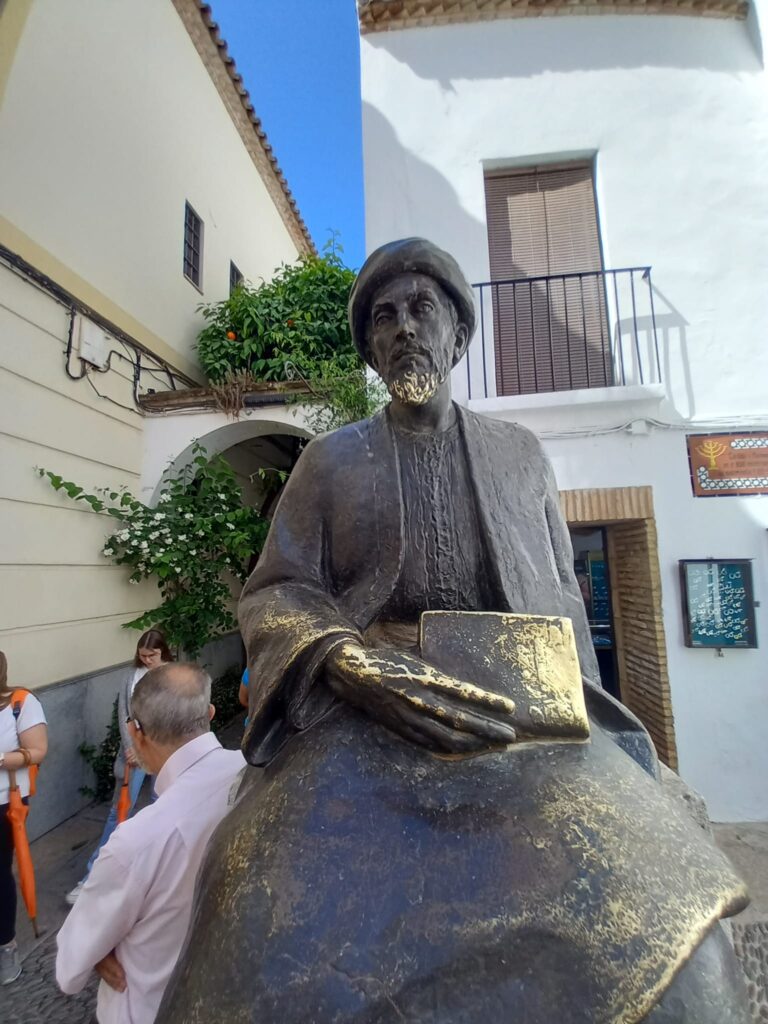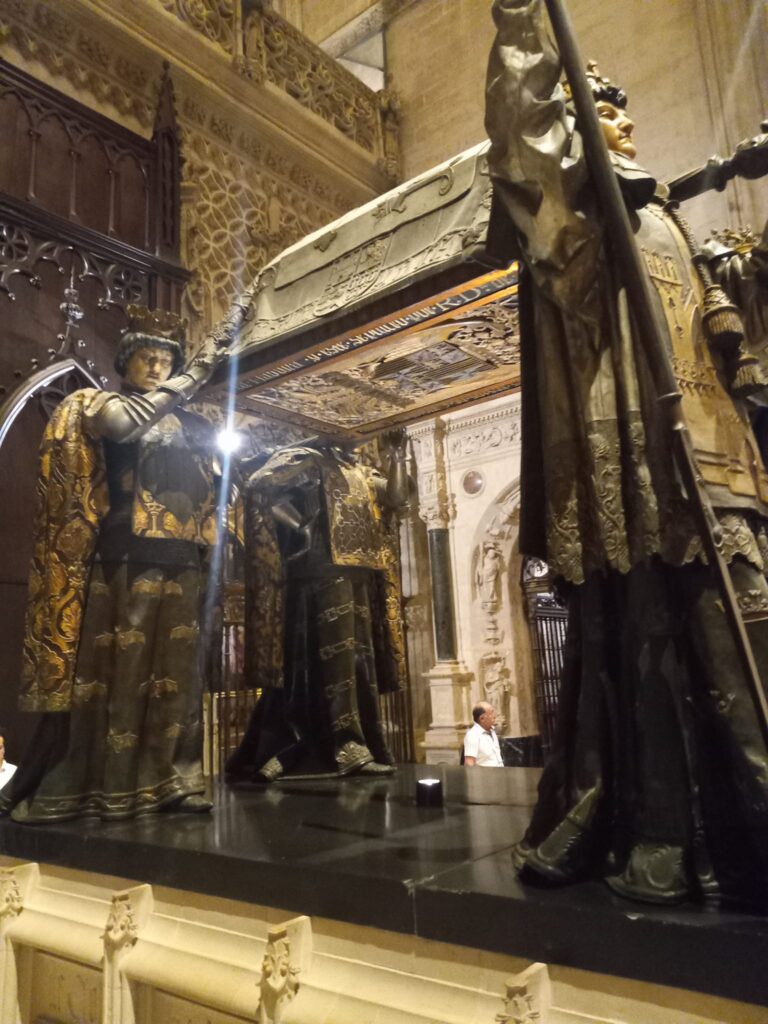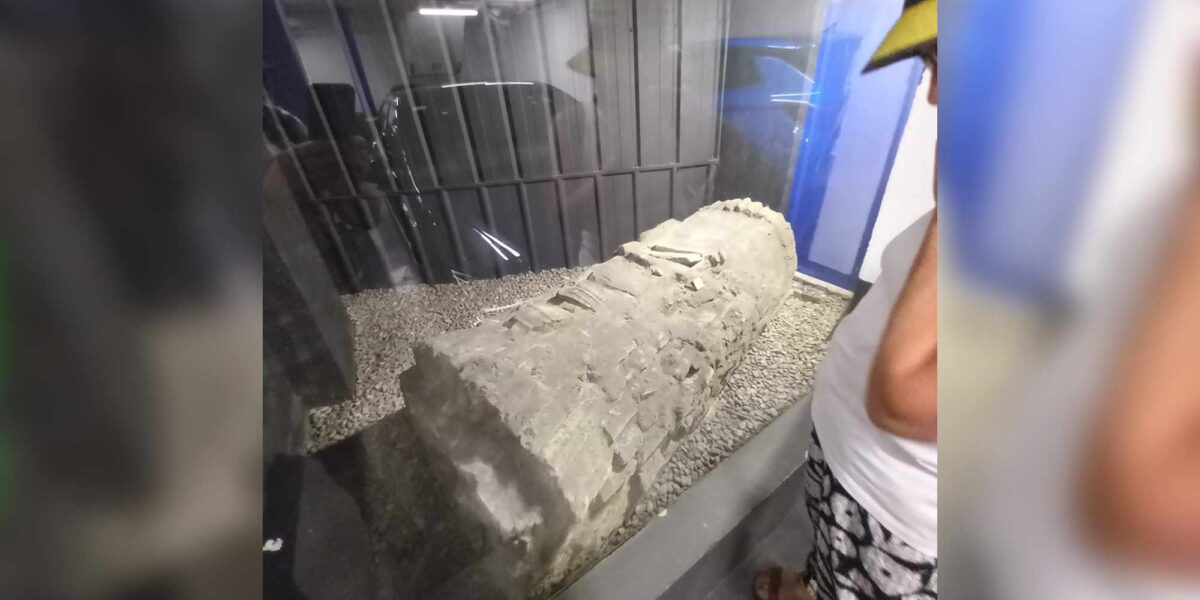A tour of Jewish Seville is an exercise in imagination. Seville is Spain’s fourth largest city and the capital of the Andalusian region in the south.
Today, there is little material evidence of the large and thriving Jewish community that lived and worked in this historic city.
Jews were well established in Seville – and throughout Andalusia – during the seven centuries of Muslim rule, from the 8th to the 15th centuries CE (Common Era).
On a recent visit, our guide to Jewish Seville, Jorge Gershon, showed us homes, buildings, and narrow, ancient streets where he asked us to form mental images of the Jews who long ago formed a significant community there.
The physical, tangible memory of that community was wiped out centuries ago.
Muslims were tolerant, the Catholics not so much
There were different sorts of Muslim rulers in this part of Spain during what historians call the Moorish period. Some were more tolerant of minority populations than others.
But, overall, during that relatively enlightened era, the large Jewish community of Al-Andalus (the Arabic name from which Andalusia is derived) had good relations with its Muslim and Christian neighbours.
In Seville, when the Catholic monarchy took control in 1248 CE that peace and harmony ended.
This period, the later Middle Ages, was what the Spanish call the reconquest (by Christians). They say re-conquest because there had been a previous Christian period, the first five or six centuries of the Common Era. That was the time of the Visigoths, who had overthrown the Roman Empire.

The more technologically sophisticated and literate Muslims of Syria and North Africa displaced the Visigoths, starting in the 700s. Like the Romans, the Muslims built roads and cities and libraries. They kept alive the knowledge and learning of antiquity as Europe dipped into the Dark Ages.
The Christian reconquest of Spain took more than two centuries to fully achieve its goal, which was to end all Muslim rule and establish a nation-state based on Roman Catholic dogma.
The reconquest was a gradual process.
The final victory did not come until 1492, the same year in which a certain Italian sailor working for the Spanish monarchy landed on the southern coast of North America.
In that year, the troops of King Ferdinand and Queen Isabella defeated the last well-fortified Moorish holdout, the hilltop city of Granada.
Today, the one-time Moorish palace of Granada – the Alhambra – is one of the most visited tourist attractions in Europe. It is a site characterized by extravagant and elegant architecture and splendid formal gardens.
Like the reconquest, the persecution of Jews and Muslims evolved and grew over time, reaching its apogee in the years following 1492, with the infamous Spanish Inquisition.
The horrors of that early exercise in ethno-religious cleansing have been well documented. They include torture, summary execution, expropriation of property, forced conversions, and mass expulsions.
Parking space #63
In Seville, the period of intense persecution started before 1492.
In 1391 there was a pogrom targeting the city’s Jews, which resulted in the end of all of Seville’s synagogues. They were, without exception, destroyed or transformed into churches. There is not a single tangible sign today that such Jewish institutions ever existed in Seville.
There is, however, one exception in Seville to this absence of physical evidence of Jews.
In 1992, five centuries after the culmination of the reconquest, in the centre of the Seville, on Cano y Cuento street, just outside the walls of the former Jewish ghetto, a construction crew uncovered a Jewish cemetery, complete with interred bones, coffins, and other artifacts.
Our guide explained that the discovery created an awkward moment for city officials.
1992 was an important year for Spain. Barcelona was to host the summer Olympics while Seville was to be the site of a World’s Fair, Expo ’92.
Recovering the long-forgotten burial ground of a persecuted minority group was not part of the program for 1992, and officials hesitated as to what to do about it. While they dithered, the original construction project went ahead. It was an underground parking garage.
Jorge Gershon led us into that garage.

We descended an elevator and Jorge took us to parking space #63. There was a car parked there, but behind it, behind a pane of plexiglass, there were a dimly-lit centuries’ old coffin and a plaque explaining that all of this was once sacred Jewish land.
It is a hidden, secret memorial to a long-gone community. Quite possibly folks who park in space #63 do not even notice it. Nobody else could have the faintest idea it is there.
To be fair, elsewhere in Andalusia there are some significant and highly visible tributes to the onetime Jewish presence. That is most notable in the city of Cordoba, birthplace of the Jewish scholar Moses Maimonides.
The great physician and philosopher is a genuine hero in Cordoba. One can visit his birthplace and the statue erected in his memory.
Spanish tourists line up to ritualistically rub the foot of the Maimonides statue, which seemed an odd gesture to this writer. When I asked them why they do this, they explained it was to acquire some of the wisdom of this great thinker.
Cordoba also has a small museum which documents the story of the Jews known as Sephardim (meaning from Spain), whose descendants spread throughout the Mediterranean region, and beyond, to Iraq, Bosnia, Bulgaria, the Netherlands, Great Britain and France.
There is much evidence today of the Muslim presence in Spain. The strategy of the Catholic kings who took control of former Muslim lands was to leave the Moorish buildings intact, but repurpose them.
Mosques, for instance, became churches.

The splendid cathedrals of both Cordoba and Seville were built inside what had been equally splendid mosques.
One can find the extravagant, silver-coated tomb of Christopher Columbus in the Seville cathedral. You don’t have to descend into a parking garage to discover this striking memorial to the age of exploration and colonialism.
Erasure: the time-honoured practice of the victors
The story of the Seville Jewish cemetery should be familiar to Canadians.
In our country, we are just beginning to discover the unmarked graves of Indigenous children.
Our Indigenous graves and the Jewish ones of Seville both tell stories of erasure, of the conquerors seeking not simply to subdue the conquered, but to eliminate any trace they ever existed.
Others are active right now in the pursuit of erasure.
China, to cite just one prominent case, has borrowed a leaf from Canada and instituted a residential school system for Tibetan children. The Chinese argue, condescendingly, that Tibet is a backward, feudal, theocratic society that must be dragged into the 21st century.
From the early 20th century until 1950 Tibet was an independent country, in an uneasy relationship with neighbouring China, which had once ruled it from Beijing.
Following the Chinese revolution, Tibet became more closely integrated with China, but with a notional measure of autonomy.
That disappeared in 1959 when the Tibetans rebelled.
Now, the Tibetan leader, the Dalai Lama, heads a government-in-exile in Dharamshala India.
The many upheavals in Chinese society over the past three quarters of a century have had a disastrous impact on Tibet.
Notable among those are the Great Leap Forward of the early 1960s, an ill-fated attempt at force-feeding economic independence, during which time hundreds of thousands of Tibetans perished, and the Cultural Revolution of 1966 to 1976), which saw the destruction of thousands of Tibetan monasteries.
For the Muslim Uighurs of China’s western Xianjiang region there are massive detentions and re-education camps. China’s leaders use the Uighur’s Islamic identity against them, claiming they provide a fertile ground for terrorism.
Like much of Indigenous territory in Canada, Xianjiang and Tibet are both rich in natural resources, including copper, lithium, oil and gas.
The erasure story is full of inconsistency and irony.
Notwithstanding its history, Spain now uses its Muslim and even its Jewish past as lures to attract tourists.
Officially Spain proudly vaunts its many impressive Moorish architectural treasures.
And while Seville consigns only a tiny remnant of its Jewish cemetery to parking space #63, the city also touts its Jewish history in its name for its most historic neighbourhood: the Judéria, the Jewish quarter.
For our part, in Canada we do Indigenous land acknowledgements, all the while stubbornly refusing to consider Indigenous claims to natural resources on their territories.
READ MORE: Indigenous ownership of natural resources is now on the national agenda
If there is one country that should be sensitive to the phenomenon of erasure it is Israel, given what Jews have historically experienced.
But today you could visit the ancient city of Jerusalem and find no sign that there was once a “Green Line” separating Israeli West Jerusalem from Palestinian East Jerusalem.
As the Israeli newspaper Ha’aretz puts it:
“Israel began its efforts to erase the Green Line – the internationally recognized border that existed until June 1967 – just days after celebrating its victory in the Six-Day War. Government map makers were instructed to remove any hints of the old border. Then came facts on the ground: settlements, military bases, roads, walls, fences, checkpoints and industrial zones, all meant to obscure what was once a border and replace it with a new system of control – making the partition of the land very difficult to implement, and some would argue already impossible.”
There could be another way, a path of mutual respect and recognition.
It is nothing less than tragic that those who, based on their own history, might have some empathy for conquered peoples seem to have chosen instead to fashion their actions after the Catholic kings of Spain.



